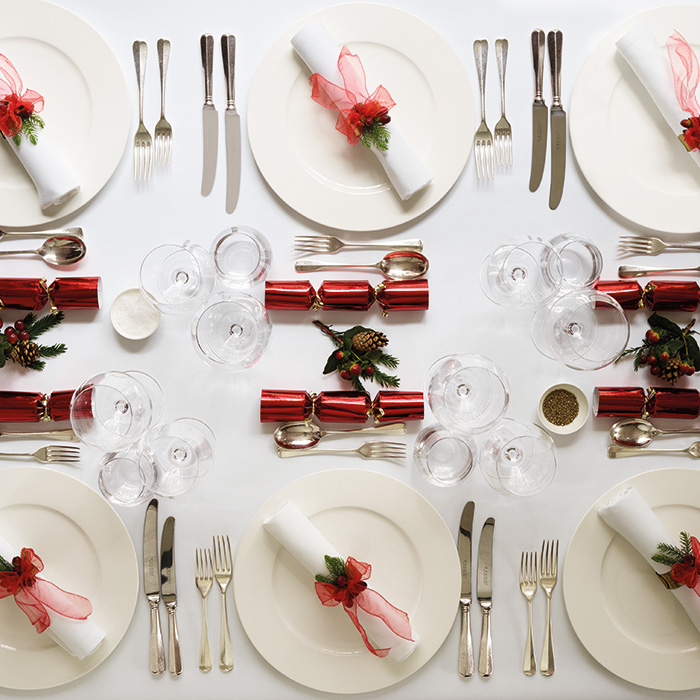A white Christmas
Author: Peter Bishop

Photograph: Jason Lowe
It would be wrong to suggest that people “simply don’t do” white wine at Christmas, because they do – often in large quantities. It would be fairer to say that, at this time of year, white wine suffers a PR problem: “just not festive enough”, you could say. Consequently, people tend to pay less attention to their white options at Christmas, especially at the dinner table. I think that’s a shame really. With all those spot-on matches, I suspect many are missing out. So, not just for salmon and the fussy people, allow me to present the case for more white wine at Christmas…
Exhibit A, if you will: Christmas dinner. Turkey, I’m sure you know, is notoriously tricky to get right. With so little fat under the skin, dryness is always a concern – it’s why so many people resort to tucking knobs of butter into every nook and cranny. A truly succulent turkey is a rare, hard-won thing. If you achieve it, your priority should be not to drown out that delicate, savoury flavour. Fruity red wine is a gamble. And the tannins won’t do the meat any favours either, not like they do with beef. A better choice – for true harmony – would be a rich white Burgundy. The generous body and ripe stone fruit will complement the meat wonderfully, while the touch of citric sharpness will give the entire plate a huge lift.
If opting for goose (good for you), a slightly more adventurous approach can be taken. Quite the opposite from turkey, goose meat is dark, melting and luxurious; encased in a shell of the crispiest crackling. Bolder whites from Alsace, with their intense flavours (apricot and honey) and tingling acidity, make for an enchanting pairing. Don’t be afraid of a little sugar either. In my experience, the deft sweetness of a good Pinot Gris is all part of the balancing act.
We must also consider the trimmings: those many contrasting elements, united by the fact they’re all swimming in fat. Turkey may be deficient in fat, but it’s amply found elsewhere: in the crisp roast potatoes (goose fat), in the gravy, the bread sauce, even in those buttery sprouts. Bacon, too, seems to have wormed its way into everything – most famously around those delicious little sausages. This is all good news though, for fat is a marvellous carrier of flavour. Mind you, regardless of its merits, all this stealthily concealed fat will soon leave you dying for a palate-cleanser. Chardonnay, à la white Burgundy, has acidity in its DNA. However, for something different, I’d thoroughly recommend a Savennières; all the same concentration but with brighter, laser-like freshness.
Away from the food, it’s worth remembering that Christmas is supposed to be a celebration. Under such circumstances, you’ll want your guests on their best form. Why on earth, then, would you sap their energy with a heavy, oppressive glass of high-alcohol red? No! Perk them up at little, with a lively apéritif. A classic Sancerre will do just this. Or perhaps a steely, mineral-edged Chablis. Neither of these wines is overly flamboyant, so perfect if you’re looking to add a bit of refinement to proceedings.
Taking a different tack, you could surprise people from nowhere with something zingy and unusual; a low-alcohol Riesling, for example. This kind of wine provides a wonderful talking point, with the added benefit that everyone will still be lucid enough to discuss it.
I’m not advocating a full-scale embargo on reds this Christmas, far from it. Rather, I wish to encourage pause for thought. White wines, with all their versatility, really shouldn’t be a postscript festive addition; quite the contrary, in many instances the whites are a downright better option than the reds.
But, if you absolutely must put Bordeaux on the table this Christmas, may I gently suggest white Bordeaux? I think you’ll find the whites of Graves a revelation.
- 2013 St Aubin, En Remilly, 1er Cru, Château de Puligny-Montrachet, Burgundy
- 2012 Savennières, Fidès, Eric Morgat, Loire
- 2008 Pinot Gris Rotleibel de Rorschwihr, Domaine Rolly-Gassmann, Alsace
- 2015 Berry Bros. & Rudd Sancerre by Domaine David Sautereau, Loire
- 2014 Chablis, Domaine Gérard Duplessis, Burgundy
- 2014 Zeltinger Schlossberg, Riesling Kabinett, Selbach-Oster, Mosel, Germany
- 2014 Ch. de Chantegrive, Caroline, Graves, Bordeaux



Er, what about the Nut Roast?
Of course, how could I forget?
It needn’t be punishment: follow Felicity Cloake’s “How to cook the perfect” recipe, then pair the finished product with a muscular, oaky white.
If that doesn’t work, ie, you still have tons leftover, serve it cold the next day with dry, dark sherry. Quite good.
As it’s a local free range West Sussex Nut Roast I may go for a Pinot Gris from Albourne, or even a Pinot Noir from Bolney to keep things local!